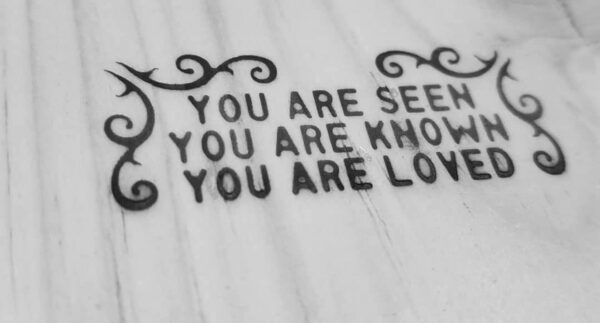I laughed out loud when I heard Tom Ahern say, “A lot of charities could be mistaken for egomaniacs.”
Egomaniacs
It’s true, right? You’ve seen it. You’ve heard from some of those nonprofit egomaniacs. You’ve even given to some of those egomaniacs.
And you and I know the antidote: those organizations need to be more donor-centric.
But I have to admit that “donor-centricity” never quite captured how I think about fundraising. I felt like it was missing an idea that I couldn’t quite put my finger on.
So I inhaled audibly when I heard Brené Brown say, “Through my research, I found that vulnerability is the glue that holds relationships together. It’s the magic sauce.”
Vulnerability
“That’s it,” I thought. “That’s what nonprofits need. Nonprofits need to be donor-centric and they need to be vulnerable to their donors.”
Trust me on this, it will make sense in a second.
The dictionary says vulnerable means “capable of or susceptible to being wounded or hurt.”
Most nonprofits tend to communicate as if they are in-vulnerable:
- Nonprofits rarely say to the donor, “you are needed now.”
- Nonprofits rarely say, “All these good things that happen, it’s because of you.” (Instead they say “look at what we did” and then tepidly say, “thank you for your support.”)
- Nonprofits almost never admit that ‘programs will be cut’ or ‘fewer people will be helped’ if the funding does not come in.
- Nonprofits rarely talk about the people not being helped / the work not being done. Instead they only talk about successes.
I know this sounds weird because it feels like all nonprofits are asking all the time.
Go look at a lot of nonprofit communications all at once (like most donors experience it in their mailbox and inbox each day). What you’ll see is that most nonprofit fundraising communicates that everything is going fine for the organization, but they do kind of need your support, and it would be special if you’d “join” them.
Does that sound like the nonprofit really needs the donor to take action right now?
Nope.
And then the nonprofits are surprised that they don’t get more donations.
What Does “Vulnerability” Look Like in Nonprofit Fundraising?
Here’s what it looks like in practice. And weirdly, this is exactly what works best most of the time when organizations Ask for donations.
- Ask as if they actually, really need help today. Like really, really need the donor to send help! Not hiding the need behind phrases like, “Please consider making a contribution” but boldly saying, “You and your gift are desperately needed. Please send in a gift today, or go online right now to www….”
- Communicate that there are reachable people who need help right now. This is telling the donor that there are people in need right now who can/will be helped if the donor responds. Note: this is NOT hiding behind a big number like “4,317 children die of preventable causes each day.” That’s a statistic, not an example of reachable people in need.
- Communicate the consequences of not giving. Share with your donor what will happen if she (and others like her) don’t give. Donors almost never hear these consequences. You know them because you’re an expert and you’ve seen it. But the consequences aren’t top of mind for your donor. Remind her. (NOTE: I’m convinced the % of Income donated to charity – a number that has remained basically the same for 40 years – would increase if donors were clearly told the consequences of not giving.)
This Will Feel Awkward and Scary at First
Folks will be worried that “donors won’t think we’re professional if we talk like this” or “we will scare people away” or “donors will think we aren’t good at helping people.” Or even the one I hate the most, “talking about people in need is emotionally manipulative.” (How is it emotionally manipulative to tell the truth, again?)
I cannot tell you what your donors will think. No one can. But I can tell you that the results from test after test are clear: if you are vulnerable and do the things I describe above, you will raise more money in the short term and the long term. With Mass and with Major donors.
Remember: Report
The other side of this coin: if you Ask with vulnerability, you need to Report to your donors what happened because of their gift.
You need to show them how their gift made a difference to your cause or your beneficiaries.
Because Asking powerfully with vulnerability over and over and over again – and never making your donor feel the results and the progress – that’s what makes people tune out over time.
We all have people like this in our lives; they only ever call you when they need help.
You don’t want to be that type of person. And nonprofits don’t want to be that type of nonprofit.
So on a regular basis, you need to send your donors a newsletter that shows them what they’ve done and expresses gratitude for their doing it. You need to send regular emails (not e-news) that share a single great story that shows how the donor’s gift made a difference.
Share the good news and give the donor the credit. This is another example of being vulnerable to your donors. Give them the credit.
Close the loop. Donors will love you for it.
How It Works
You Ask with vulnerability, like you really need help. You show the donor how bad things are happening in the world, but good things will happen if she gives a gift.
She’s emotionally moved. She’ll give you a gift.
Then you Report back to her. You show her an example of how her gift made the world a better place. How her gift helped somebody.
She’s overjoyed! Partially because you told her she made a difference. And partially because most nonprofits usually send her some chest-thumping marketing materials (“Look what we did!”) instead of telling her that she made a difference.
Now she trusts you. She sees that her gift made a difference. She’s FAR more likely to donate to you again.
Now you raise more money with each appeal. Now you keep more of your donors for longer.
Now you raise even more money with each appeal. More people become major donors.
It’s all a cycle. And it starts by telling a donor that she’s needed right now, and that her gift will make a difference.
Nobody said fundraising was easy. But at the core, I think it’s pretty simple to understand.
Want to Go Deeper?
We just released our brand new eBook, Asks That Make Your Donors Take Action. It’s free – go download it.
And in the meantime, be vulnerable!



